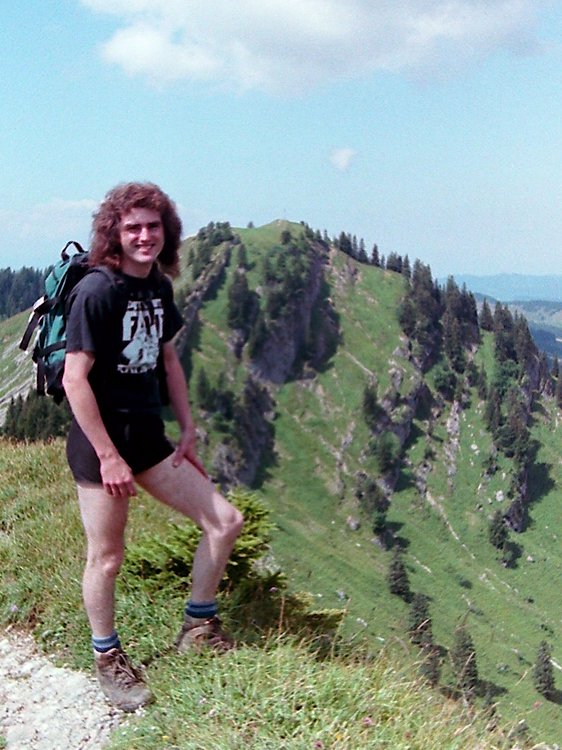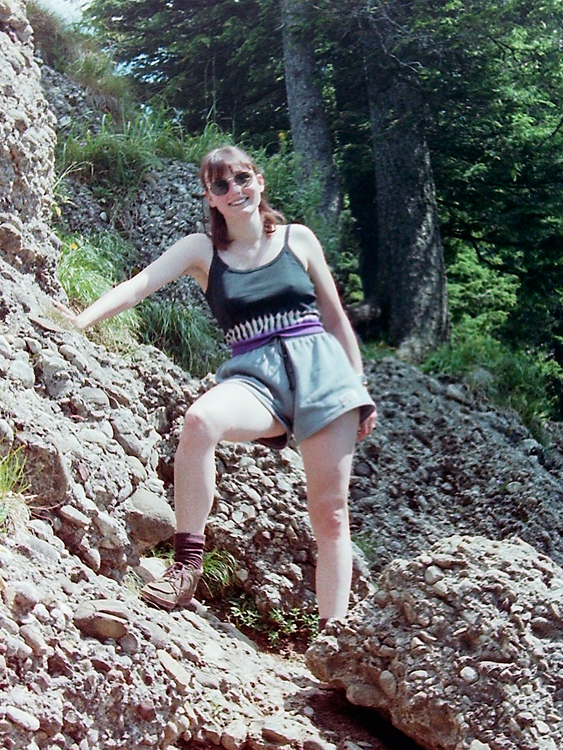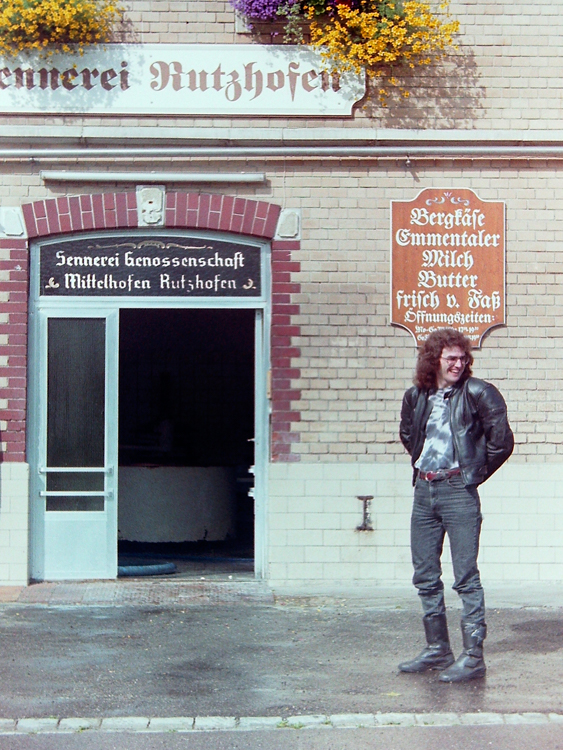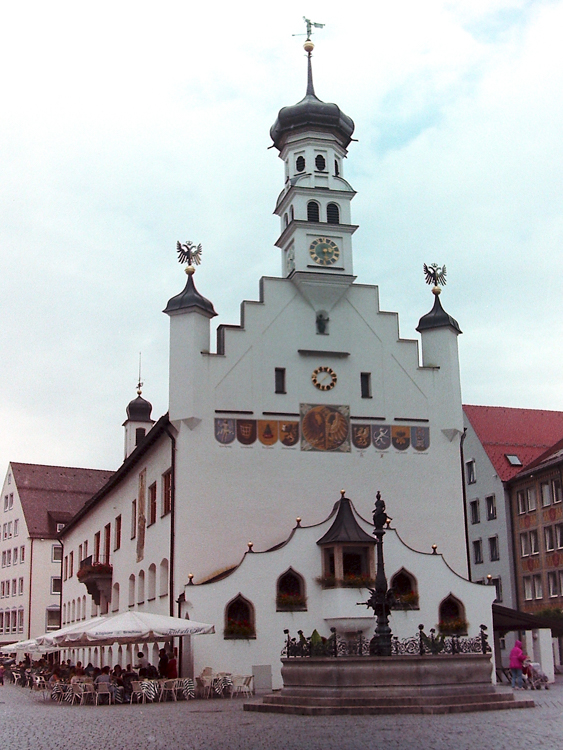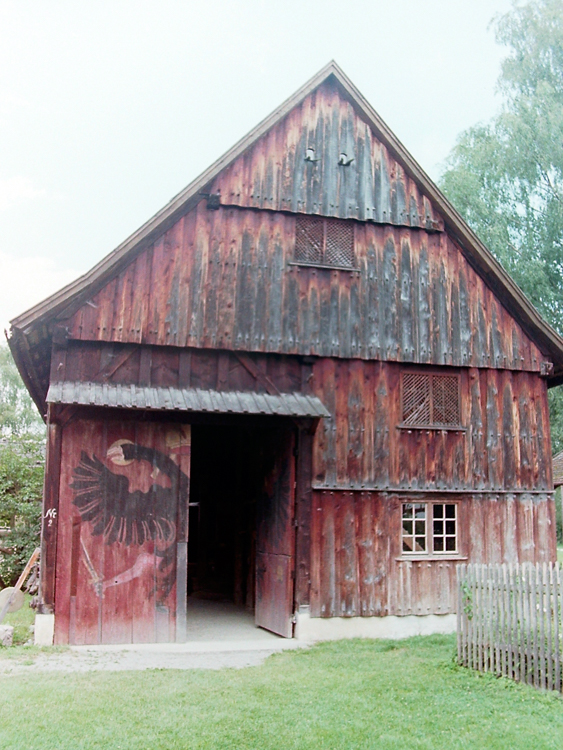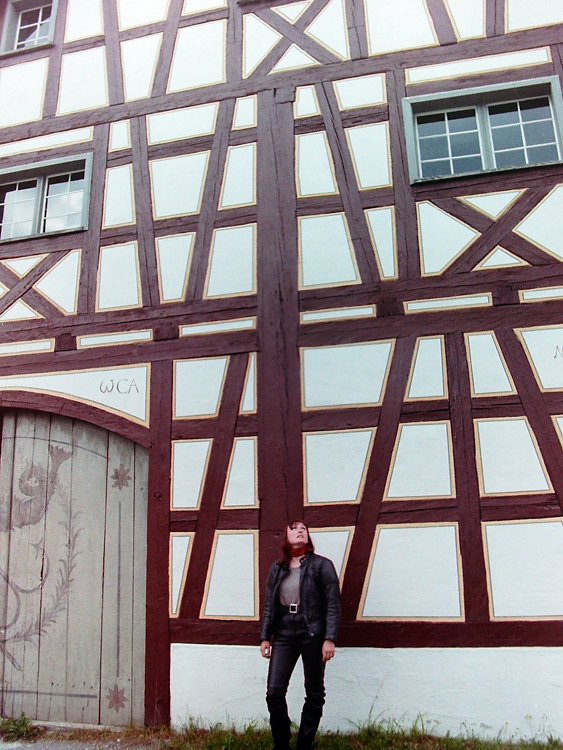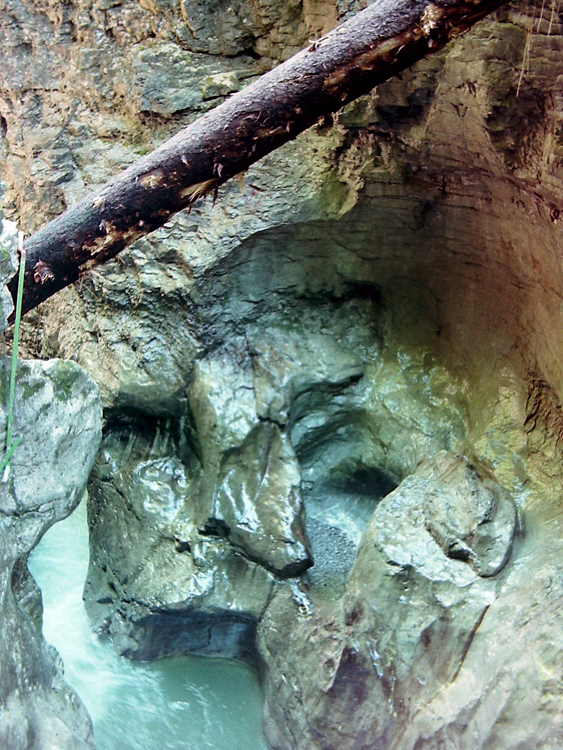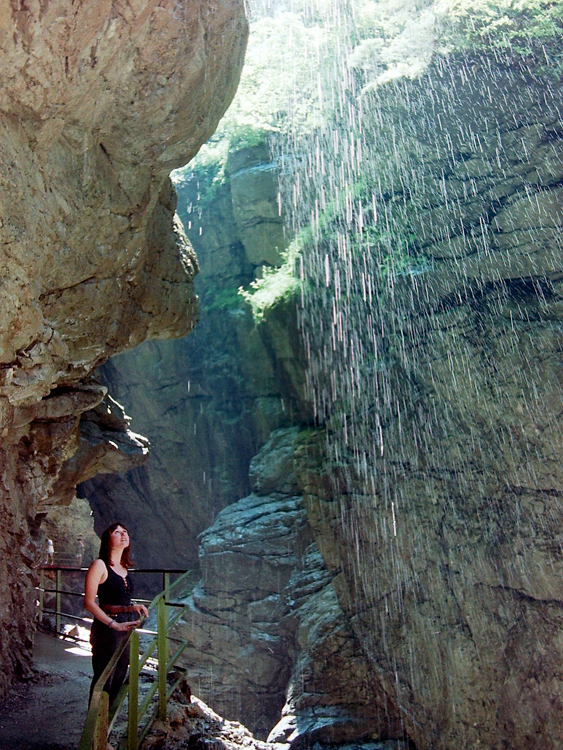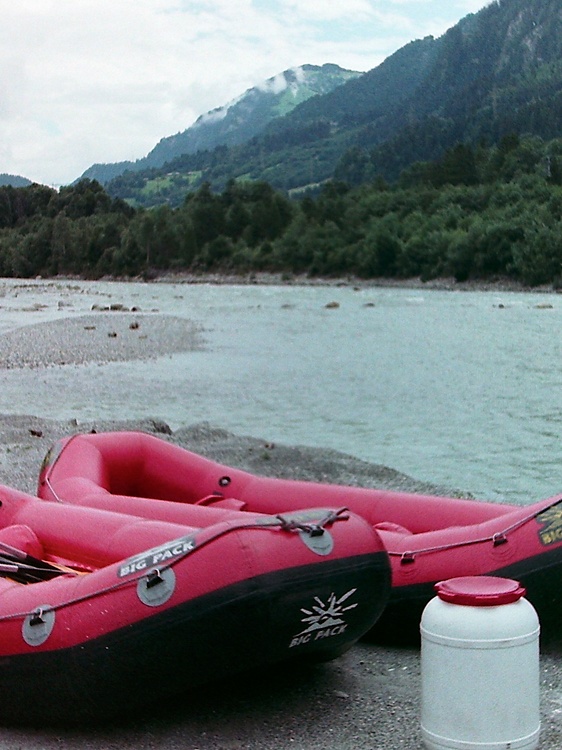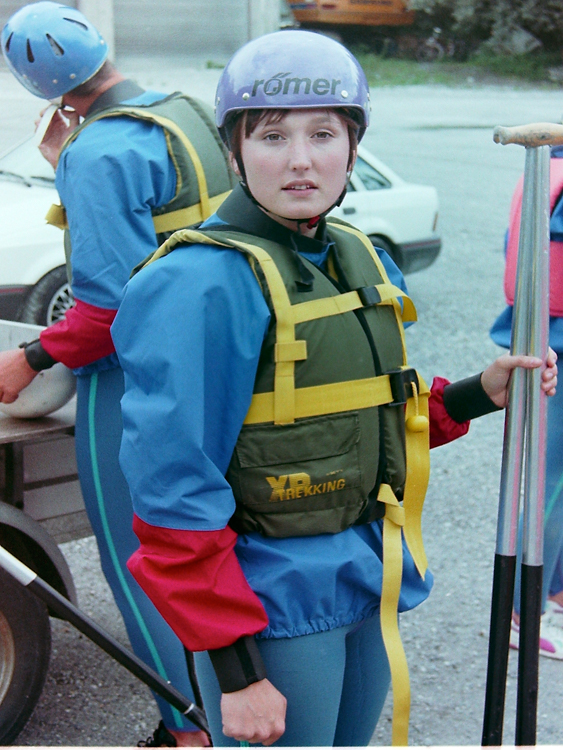After a pleasant few days motorcycling around the Black Forest, we headed down to the German/Austrian border for a week in a hotel in Oberstaufen. Heading into Singen we took the coast road around the Bodensee, which was beautiful but plagued by terrible traffic. The local road planners didn’t seem to have understood the concept of linked traffic lights, as they were scattered around on apparently random timing patterns. People spend so much time there waiting at red lights that there are signs asking you to switch your engine off to prevent pollution. However, eventually we made it through and got back onto the minor roads all the way to the hotel that was to be our home for the following week.
Oberstdorf
From Oberstaufen it is a short step to Oberstdorf, where we climbed up the highest ski-jump in the world with a view to bungee-jumping off the top, but the jump was far too expensive, although the climb was worth it because the views from the top were incredible.
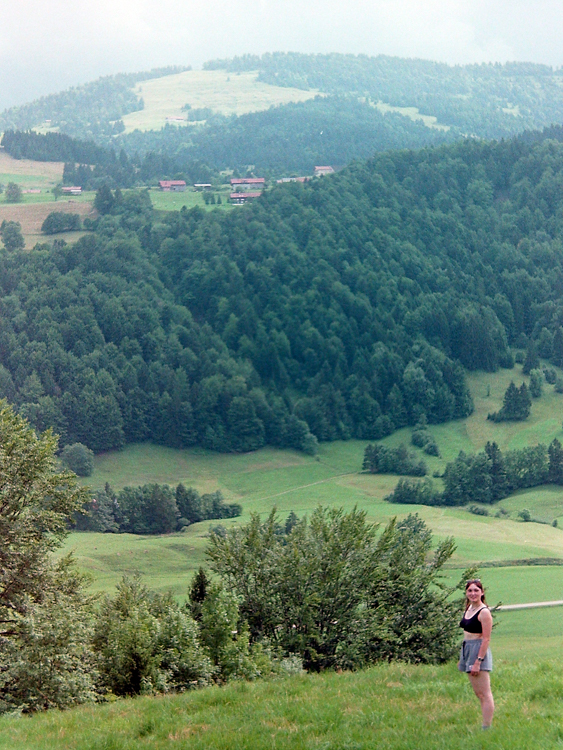
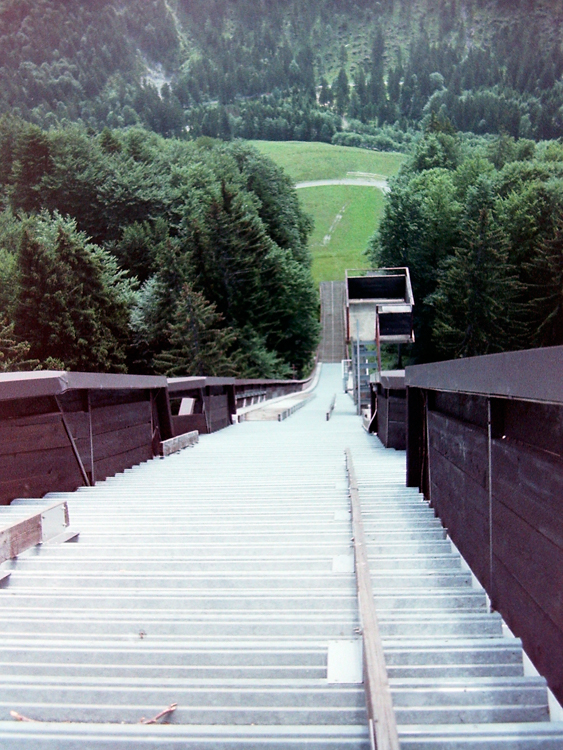
Olympic Ski Jump
Neuschwanstein
Another day we rode through dreadful traffic to the fairy tale castle Neuschwanstein (as seen in Chitty Chitty Bang Bang), and thought that a romantic-sounding horse-drawn carriage up from Schwangau would be a nice idea. The reality was far from romantic, as after a lot of loud wrangling with rude German tourists about who had and who hadn’t pushed in to the queue, about fifteen of us crammed into a very small buggy and were pulled very slowly up the mountain by a very smelly horse.
Once at the castle, we spent an hour queing for a ticket (the ticket clerks thought that it would be a good idea to go for lunch at the busiest period), and then we had to wait for another half hour for our guide. I think that if I hadn’t been there before I would have given up before we got in, but I knew that it would all be worthwhile in the end, and it was just as crazy as I remembered it, commissioned by Mad King Ludwig whose personal style could best be described as Big, Colourful, and Gothic.
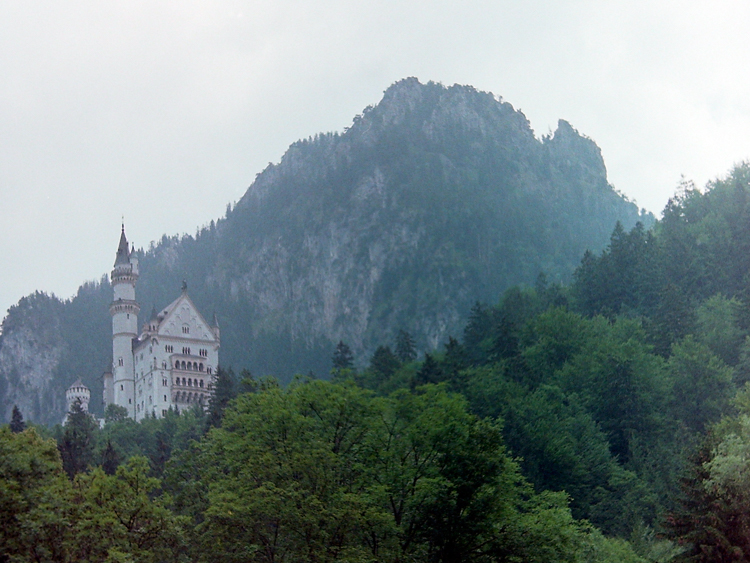
Mad King Ludwig’s castle at Neuschwanstein
Rather than face the crowds again on the way down, we hiked across country, following a stream bed that cut down the wooded mountain side back to Schwangau. We did look up at the twin castle of Hohenschwangau, and thought about visiting, but we’d really had enough of queuing for one day, and left it for another time.
Cheese and farming
Another morning we spent an agreeable if rather smelly time at a traditional cheese-makers, where huge rounds of cheese were hand-crafted by jolly German craftsmen.
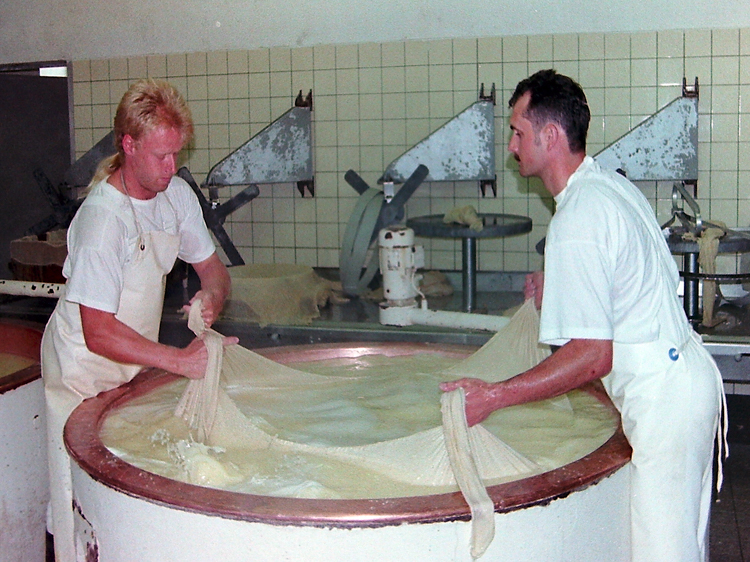
Blessed are the cheesemakers

More cheese than you can shake a stick at
One afternoon we spent a long time trying to find a local museum of traditional farmhouses at a place called Illerbeule. We nearly failed, but by considerable luck we managed to find it, although since we arrived at 16:00, which is closing time for most places in the area, we thought it had all been to no avail, but for some reason this one place still had another couple of hours of opening time.
It really was a fascinating place, consisting of a complete farm built from cottages and barns from different eras and from different parts of Germany. The thing that struck me most compared with similar structures in the UK, was the amazing amount of living space that these farmers seemed to have. In Britain, in most historical ages, everybody hunkered down in a tiny room with all the animals. Here, if a farmer decided to go in for instance for cheesemaking, then he just built a whole new cheesemaking room on the end of his farmhouse. The barns were enormous too, and beautifully finished in boldly painted designs.
Hochgrat
On yet another beautiful day of blazing sunshine, we caught a cable car to the top of the 1833m Hochgrat ridge which marks the border between Germany and Austria, and set off westward along the top. Some 5km and several hard hours later we decided to leave the crumbly conglomerate of the main path and continue along the spine of the ridge, but somehow we went a little astray, and after an interesting 1500m descent through an almost vertical forest we arrived at somebody’s farm.
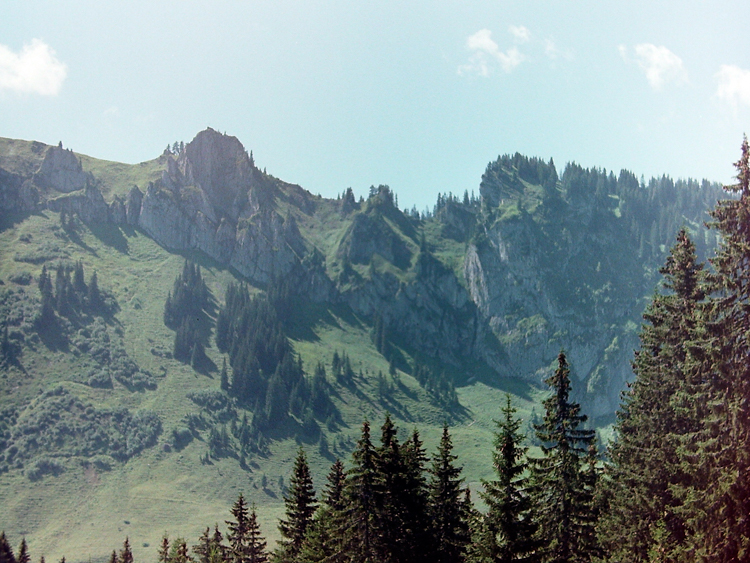
Views across Hochgrat
The amused farmer explained to us that the reason that we couldn’t work out where we were on our map was that we’d walked right off the edge and were now in Austria, so there was nothing for it but to climb all the way back to the top and then back down into Germany.
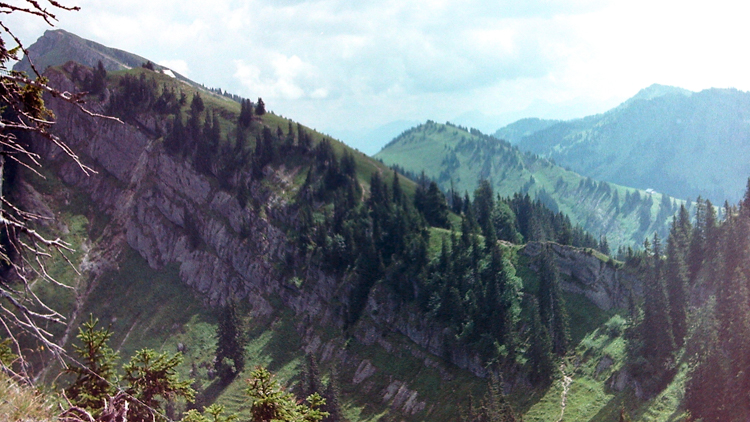
Good hiking country
Once more at sea level, and thoroughly footsore, we were extremely grateful to discover a small bus waiting to take us to civilisation, Jacuzzi, and beer.
Breitachklamm and Sturmanns Höhle
We also spent a day visiting a couple of local geological features. The first was Sturmanns Höhle, a 300 metre meltwater shaft and tunnel bored over 600,000 years ago through a mountain near Obermaiselstein. There is quite a climb up to the entrance, and then, once inside, a long long descent into the heart of the mountain, at first along a crack or crevice, but then down the actual vertical shaft itself by means of a series of metal steps. It’s dark and drippy, but fun to be that far underground without benefit of ropes or a mineshaft.
From the Höhle we headed for the Breitachklamm, rightfully hailed as Germanys most beautiful gorge. It is really impressive, a deep fissure scoured by a fast-flowing river, with sides so high that they appeared to close in at the top and blot out the daylight. Judging by the mangled and twisted steel handrails along the way, the river must get pretty tempestuous at times, and there were also entire pine trees jammed crosswise across the valley some twenty or thirty feet above the current water level. It must be an incredible place in a storm.

Looking up at Breitachklamm
White-water rafting in Switzerland
Finally, we nipped over into Switzerland to go white-water rafting with a German fire brigade, which wasn’t as scary as I expected but was still great fun.
And then it was time to get back on the bikes and go home, visiting a few more campsites along the way. On the border between Switzerland and France we passed a long queue of steam-powered cars, which was strange, and in the tiny French village of Freland we ate at a museum that doubled as a restaurant in the evenings, but on the whole we just rode, tired and happy, home to England and to bed.
